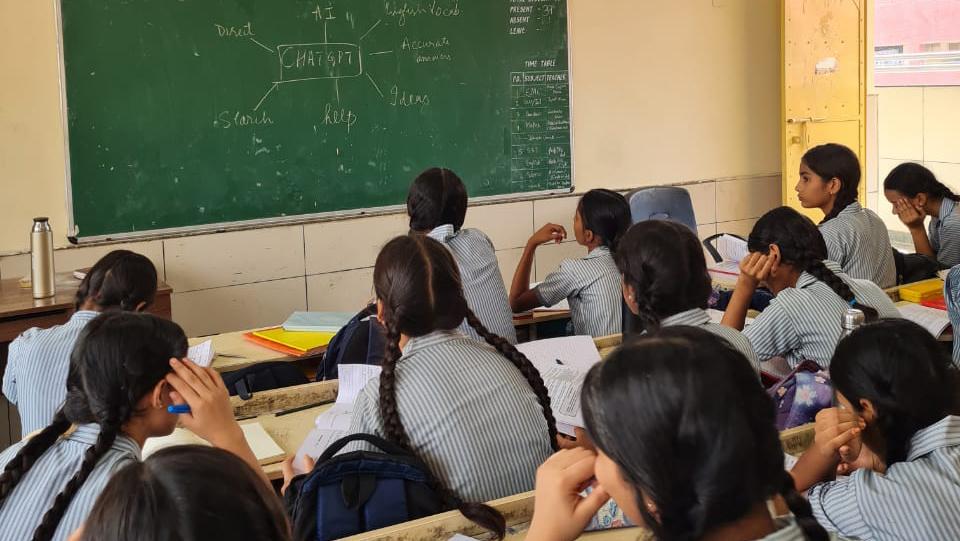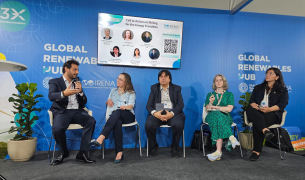Unlocking potential: How Generative AI can help enhance career readiness

During my Teach For India fellowship, while teaching upper secondary classes in a low-income private school in Pune, India, I realized that there was a huge lack of career readiness among my students. As a result, I made a point to focus on skill-building with my students as well as creating opportunities for them to identify their strengths and weaknesses and develop post-school educational goals. After my fellowship, I started studying for my Masters in Public Policy where I focused on researching and working on career readiness and vocational education. I saw this as a huge need for students coming from disadvantaged communities as they lacked resources, support and awareness of what they could do after school, and how to do it. Specifically, I have chosen to focus my research on the use of Generative Artificial Intelligence (or GenAI) and the ways in which it might be able to help build career readiness skills in under-resourced schools.
In the last few years, as GenAI has come to market, the educational dialogue has changed for everyone. GenAI tools are widely used in K-12 schools, and new updates like GPT-4 and Claude 3 have been made more robust and accessible, but largely only for students who have the resources to access them. This leaves underrepresented communities like the students I taught behind.
When I spoke to my Teach For India students, they had no idea that these tools existed. This drew my attention to the existing digital divide and the need to democratize GenAI and make it more accessible. As part of my Master’s research I conducted a randomized control trial (RCT) with 18 Teach For India schools in different cities in India aiming to investigate the question: Does GenAI affect the career readiness of disadvantaged youth?
The research involved implementing career-readiness lesson plans in the classroom, using either regular or AI-integrated lesson plans. The plans focused on strengths and weaknesses, global job exploration, and creating goal-oriented plans based on the OECD research-based career readiness education framework developed by Teach For All and DHL as part of the GoTeach Initiative. For the AI-integrated plans, teachers used GenAI to explain new concepts and helped their students use it to brainstorm ideas and gather information. In order to ethically instruct the students on how to use GenAI, the teachers first provided a detailed explanation on best practices and common pitfalls with AI and then walked them through guided exercises before allowing students to explore the tools for personal skill-building and coaching during group and individual practice. Students must be informed about the ethical use of GenAI and understand that these tools are intended to support their studies by enhancing their learning experience and personal skill development, rather than replacing their critical thinking and schoolwork. By emphasizing ethical guidance, we ensure that students use GenAI responsibly and effectively, promoting a balanced approach to technology and education.
The results collected from the surveys before and after the intervention showed that incorporating the GenAI tools significantly improved students’ career knowledge and reported educational goals (ie. an increase in students wanting to pursue higher education vs. just finishing high school), supporting the question we were trying to focus on in the research. The students who used GenAI in the classroom with a teacher were 22% more likely to report wanting to pursue higher educational goals compared to those who didn’t use AI in the classroom. Additionally, for career knowledge, they were 65% more likely to have higher career knowledge. This indicates that the integration of GenAI is a path that can help students become more skilled and encourage them to use it as a personal coach with ethical guidance. By providing targeted practice and resources, GenAI can act as a personal coach to help students identify their strengths and areas for improvement. While GenAI significantly aided in this educational delivery, the essential value of teachers remained paramount. Teachers played a crucial role in interpreting and guiding the use of GenAI, ensuring it aligns with pedagogical goals and addresses the diverse needs of students.
As we welcome the benefits of GenAI with open arms, we must also navigate the ethical considerations it entails. The success of integrating GenAI into education needs to take on a holistic approach. Governments, policymakers and think tanks must recognize the role GenAI plays as an enabler and equalizer in education and provide opportunities for teachers to integrate this into classrooms and curriculum. The government should work on capacity building of teachers and help them learn and integrate the use of GenAI in their daily work, which will help them reduce administrative workload and focus on helping students improve their learning and goals.
It is clear that in the near future, GenAI will continue to play a significant role in reshaping education, especially in helping teachers and empowering students to make better decisions and be prepared for the future. It is critical that we remain committed to further refining these tools to better serve our students and equip them with the knowledge and skills necessary for the evolving workforce.
As the digital landscape evolves, so too must our educational strategies. GenAI offers a powerful tool for enhancing educational outcomes and equipping students with crucial career competencies. Let’s continue to advocate for broader access to these technologies, ensuring every student has the opportunity to benefit from the advancements GenAI can offer. What steps will you take to integrate GenAI into your educational practices to ensure no student is left behind?



